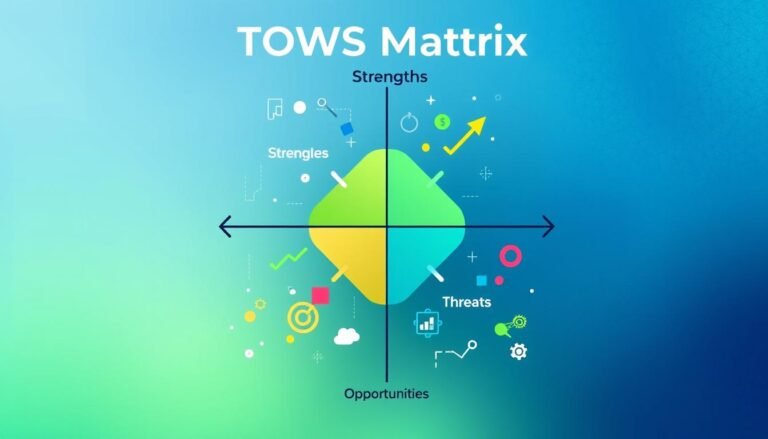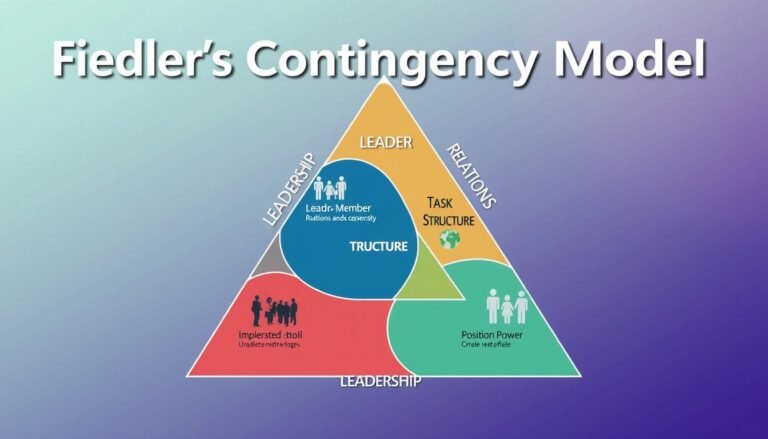Embrace the Future with Open Innovation Now
What if the key to growing your business is outside your company? In today’s fast-changing world, it’s time to think differently. Open innovation is all about using ideas and resources from outside to boost your own creativity. This approach is crucial for staying ahead in the digital age.
It’s about working together and being open to new ideas. Companies like Siemens and Ford show how working together can lead to big breakthroughs. They’ve found new ways to stand out in the market.
Are you ready to see how open innovation can change your business strategy?
Key Takeaways
- Open innovation combines outside ideas with what you already have to spark creativity.
- Working with others speeds up getting products to market and cuts costs.
- By bringing in different viewpoints, you can solve problems better.
- Building strong relationships outside your company takes effort and clear communication.
- Successful open innovation helps you adapt quickly to new market trends.
- Partnerships are key to tackling today’s challenges, as seen during the Covid-19 pandemic.
Understanding Open Innovation
Open Innovation is changing how companies innovate. It means working with others outside the company to share ideas and knowledge. This approach is key in today’s complex and competitive world.
What is Open Innovation?
Henry Chesbrough introduced Open Innovation in 2003. It’s about working with others to innovate. Unlike old ways, it looks outside the company for help. This can be through partnerships or working with other businesses.
By doing this, companies can make new products faster. They can meet market needs better.
History and Evolution of Open Innovation
Open Innovation has grown a lot since it started. It began as a way to overcome internal limits in research and development. Now, it’s a key part of business strategy.
For example, Philips set up the MiPlaza innovation lab to work with others. This shows how companies use each other’s strengths. It opens up new ways to solve problems across industries.
Key Benefits of Open Innovation
Open Innovation brings many advantages:
- Access to external expertise: Working with others brings in new knowledge that might not be in-house.
- Enhanced creativity: Mixing different ideas leads to more innovative solutions.
- Accelerated time-to-market: Faster collaboration means quicker product releases.
- Cost savings: Sharing resources cuts down on research and development costs.
Open Innovation is used across many sectors. It helps companies grow and innovate together. Working with others is key to overcoming today’s innovation challenges.
Collaboration and Co-Creation
Collaboration is key to driving innovation in companies. As businesses aim to stay ahead, they see the value in working with others. This teamwork brings together different ideas and boosts creativity.
Importance of Collaboration in Innovation
In today’s fast business world, teamwork is essential for new ideas. Companies often face hurdles in working with others, like losing control, unclear rules, and legal issues. By picking the right partners, companies can lower these risks.
Driving Co-Creation with External Partners
Companies push for co-creation by forming tech partnerships. These partnerships help set clear goals, making projects more effective. Using special innovation platforms helps with growth, clear talks, and flexibility, which are key in teamwork.
| Advantages of Collaboration | Challenges in Co-Creation |
|---|---|
| Increased pipeline of better ideas | Lack of control over processes |
| Reduced risk in project endeavors | Unclear goals and objectives |
| Faster time to market | Legal and commercial barriers |
| Enhanced brand image | Diverse partner management |
Open Innovation Strategies for Growth
Using open innovation can really help a business grow. Companies need to be flexible to meet changing market needs. This flexibility lets them work with others outside the company, bringing in new ideas and skills.
Integrating Open Innovation into Business Models
Starting open innovation needs a clear plan. Companies must set goals and strategies for working together. Getting everyone on board is key to making it work. The goal is to build a place where creativity thrives and everyone’s ideas count.
Examples of Successful Open Innovation Initiatives
Many companies have seen the benefits of open innovation. For example, Bosch and KTM have sped up their projects by working with others. Procter & Gamble’s “Connect + Develop” program uses outside help to make better products and meet customer needs. These examples show how open innovation can give a company an edge, helping them grow and improve.
https://www.youtube.com/watch?v=MpHIdQ_EQTY
| Company | Open Innovation Initiative | Impact |
|---|---|---|
| Procter & Gamble | Connect + Develop Program | Enhanced product development and customer engagement |
| Bosch | Collaborative projects with startups | Accelerated innovation and market entry |
| KTM | Partnerships in technology advancements | Increased competitive positioning and growth |
Technology Partnerships and Knowledge Sharing
In today’s world, forming technology partnerships is crucial. These partnerships help companies work together, share risks, and reach big goals. They can lead to big innovations and help companies stay competitive.
Building Strategic Technology Partnerships
There are many types of technology partnerships. They often involve working with others outside the company. Here are some main types:
- Vendor Ventures: Companies work with tech vendors to get new technologies without making them themselves.
- R&D Partnerships: These are common in fields like biotech and aerospace. They focus on making new things by working with universities and research centers.
- Licensing Agreements: These let companies use technology or brands to reach more customers and make money from their ideas.
- Joint Ventures: These are new companies made for a special project. They let companies with similar goals share resources but keep their own identity.
- Outsourcing Partnerships: Hiring outside companies for certain tasks lets companies focus on what they do best and save money.
The Role of Knowledge Sharing in Open Innovation
Sharing knowledge is key to open innovation. It helps companies work together and use different ideas to solve problems and innovate faster. Important parts of sharing knowledge include:
- Innovation Ecosystems: These networks bring together startups, universities, and research centers for sharing ideas.
- Collaborative Technologies: These tools use the ideas of employees and partners to make innovation happen faster.
- Knowledge Sharing Platforms: Tools like intranets and social networks for companies share information and best practices within teams.
- Project Management Tools: Tools like Trello and Asana keep teams in sync and clear on tasks.
- Crowdsourcing Platforms: These platforms get ideas from people outside the company, making the idea process richer and solving tough problems.
Putting a focus on these partnerships and sharing knowledge helps companies adapt better. As things change fast in business, working with others is key to finding new solutions and staying ahead.
Challenges of Implementing Open Innovation
Open innovation brings unique challenges for companies. They face resistance from inside and struggle to manage different stakeholder interests. These hurdles can slow down innovation, especially when old ways meet new teamwork methods.
Common Obstacles Organizations Face
When companies try open innovation, they hit several roadblocks, including:
- Lack of clear goals, which can slow down innovation.
- Insufficient commitment from inside teams, causing innovation to stall.
- Poor interaction with the audience, making open innovation less effective.
- Too complex idea submission processes that scare people off.
- Handling a lot of ideas becomes hard.
- Worries about losing control over open innovation, making stakeholders uneasy.
Strategies to Overcome These Challenges
To beat these challenges, planning and action are key:
- Set up clear communication to align goals across the company.
- Train employees and use nudging and gamification to boost participation.
- Use platforms like ITONICS to make submitting ideas easier for outsiders.
- Use events like conferences to promote open innovation.
- Regularly check submissions to make sure they fit with company goals.
- Make IP agreements flexible and fair to ease collaboration worries.
| Challenge | Strategy |
|---|---|
| Lack of clear goals | Establish clear communication channels |
| Lack of stakeholder commitment | Engage employees with training and gamification |
| Poor audience engagement | Utilize external platforms for submissions |
| Complex submission forms | Simplify submission processes |
| Difficulty in management | Leverage promotional venues for initiatives |
| Fear of losing control | Create flexible IP agreements |
Companies can tackle open innovation’s challenges by knowing them and using effective strategies to solve them.
Conclusion
The future of commerce is all about using open innovation to stay ahead. Big names like GE Ventures, Procter & Gamble, and IBM are showing the way. They use outside knowledge and work together to stay ahead.
These companies team up with startups and schools to find new solutions. This makes the innovation process smoother. It’s clear that open innovation is key for success.
Industries are changing fast, and companies need to adapt. Samsung and NASA have shown how working together can lead to big wins. They’ve made products better and solved problems faster by working as a team.
Now, 81% of UK companies see working with startups as vital for their growth. This shows that being proactive is crucial for finding new opportunities. Open innovation is more than a trend; it’s a smart way to grow.
By working together and being open to new ideas, companies can lead in innovation. As the business world changes fast, those who focus on open innovation will shape their industries’ futures.
Source Links
- Embracing Open Innovation
- Why Now Is the Time for “Open Innovation”
- Everything You Need to Know About Open Innovation
- Open Innovation – What It Is and How to Do It
- A Guide to Effective Co-creation That Drives Innovation
- Co-creation, Collaborative Innovation and Open Innovation in the Public Sector: A Perspective on Distinctions and the Convergence of Definitions
- Open Innovation: Strategies and Examples | ITONICS
- Open innovation: Strategies and Benefits for Boosting Business Collaboration
- Open Innovation and Strategy
- Technology Partnerships: A Guide to Selecting the Right Tech Partners
- Leveraging Collaborative Technologies to Boost Knowledge Sharing and Innovation | The eLearning Blog
- Challenges of Open Innovation and How to Overcome Them | ITONICS
- Overcoming the most common open innovation challenges
- Open Innovation Examples, Definition, and Challenges
- The Power of Open Innovation







